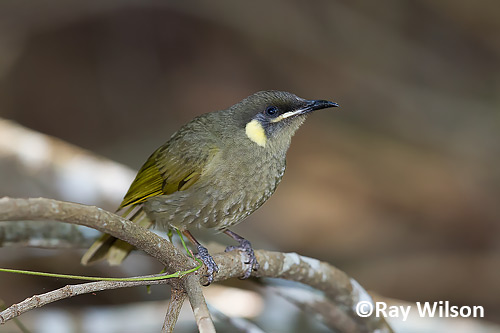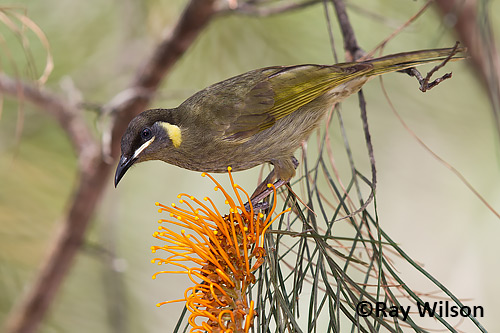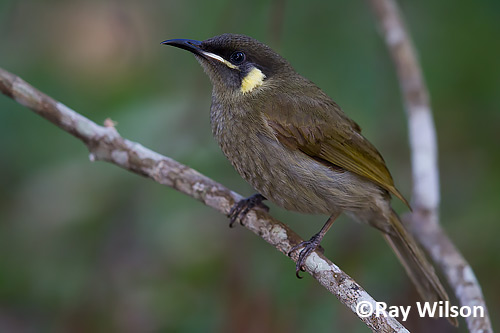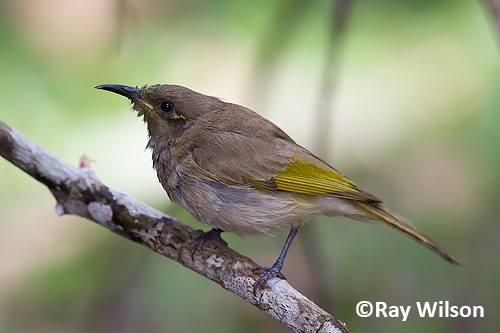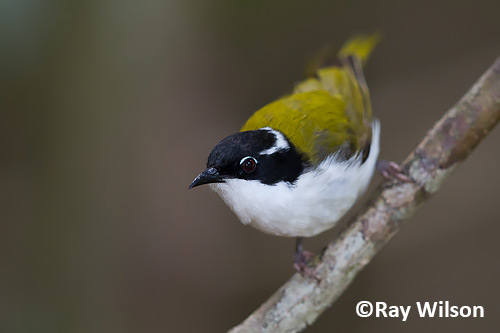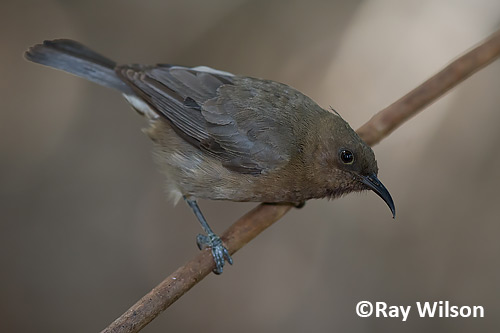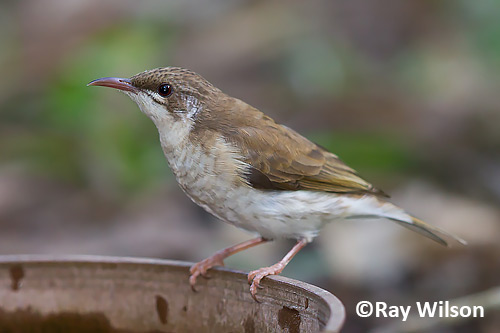
- Home
- Photography Tours
- Diary / Blog
- Galleries
- Foreign Trips
- Tasmania 2016
- NE Queensland 2016
- Western Alps 2016
- NE Spain 2016
- Australia's Wet Tropics 2015
- Australia's Top End 2015
- SW Australia 2015
- Switzerland 2015
- Andalucia 2015
- Belize 2015
- Australia 2014
- Switzerland 2014
- Belize 2014
- Bahama Islands 2014
- Switzerland 2013
- Ecuador 2012-2013
- Florida 2011-2012
- Vancouver Island 2011
- Australia 2010
- Peru 2008
- Bulgaria 2007
- Lesvos 2006
- California 2006
- New Zealand 2005
- Extremadura 2005
- Goa, India 2004
- The Gambia 2003
- About
August 2014
26th-30th August 2014
Julatten, Queensland, Australia
Part 1 : Honeyeaters
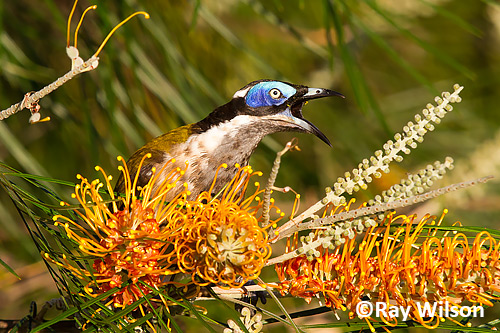
Blue-faced Honeyeater (Entomyzon cyanotis)
After spending 3 days in Cairns, it was time to leave the metropolis and head to the hills for 6 days of birding in the upland rainforests in the vicinity of the small township of Julatten, about 1.5hours to the northwest of Cairns.
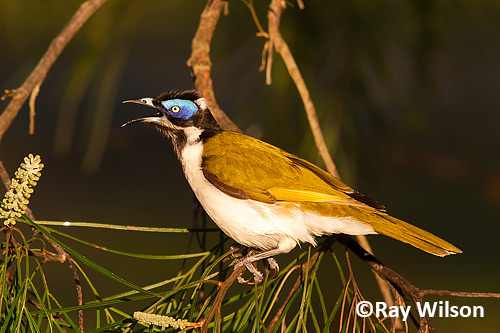
Blue-faced Honeyeater (Entomyzon cyanotis)
Since there is quite a high diversity of honeyeaters in the area, and I managed to get decent photos of most of them, I thought it would be a good idea to dedicate this page to a study of this family.
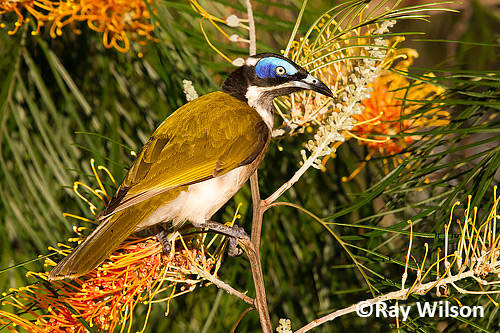
Blue-faced Honeyeater (Entomyzon cyanotis)
Honeyeaters are a very diverse family with 175 species recognised worldwide, although most birders will not be very familiar with them since they are found nowhere else except the Australasia and Oceania regions. Almost one third of the family are endemic to Australia and over 40% of all the species occur in the country. Of course, Australia is a huge country with a wide variety of habitats ranging from some of the most arid deserts in the world to wet tropical rainforests so you will need to travel around a bit to see them all, especially since many are very restricted in their ranges and habitat preferences.
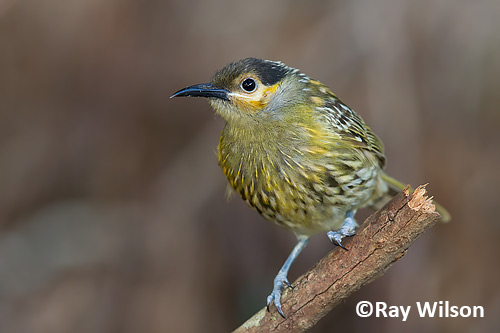
Macleay's Honeyeater (Xanthotis macleayanus)
One such range restricted species is the Macleay's Honeyeater which is only found in the low to mid-altitude rainforests of northeastern Queensland from Cooktown to Townsville. A mid-sized honeyeater, Macleay's Honeyeater is mainly insectivorous but does also drink nectar and around the Julatten area I found many individuals jealously guarding the nectar stores of flowering Grevillea bushes.
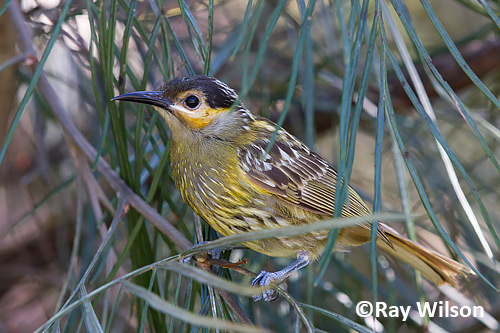
Macleay's Honeyeater (Xanthotis macleayanus)
There are 3 species (Graceful, Yellow-spotted and Lewin's) in the area that look very similar in the field guides, but are actually quite straight forward to identify in the field due to differences in their relative sizes, behaviour and calls. Of the three, Graceful Honeyeater is the smallest, with a longer, more slender bill and a habit of flicking its wings when it first alights on a branch. It is also very vociferous and its frequently uttered "chip" note makes identification easy after you've heard it a few times.
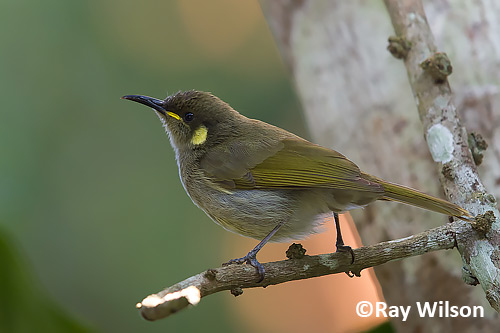
Graceful Honeyeater (Meliphaga gracilis)
Slightly bigger than Graceful Honeyeater, Yellow-spotted Honeyeaters have a slightly shorter, thicker bill. It is also very vociferous and has a loud 3-10 note, high-pitched, staccato call that often starts slowly.
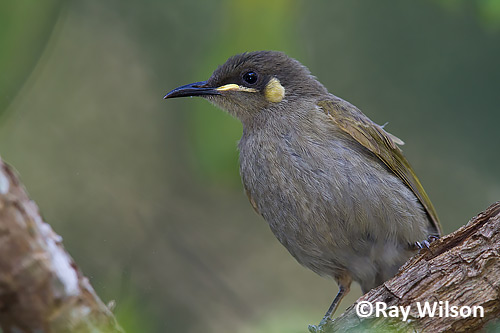
Yellow-spotted Honeyeater (Meliphaga notata)
The largest of the three is Lewin's Honeyeater. This species has a much shorter, thicker bill than the other two and also usually has a larger, more cresent-shaped yellow ear-patch, although this latter feature is rather variable. Like the other two, it is vociferous and its loud, rapidly delivered series of staccato notes is highly distinctive and easily recognisable.
Lewin's Honeyeater (Meliphaga lewinii)
You can see the variation in the shape of the yellow ear patch among individuals of Lewin's Honeyeater by comparing the photos above and below.
Lewin's Honeyeater (Meliphaga lewinii)
Unlike the previous two species, which are restricted to northeastern Queensland, Lewin's Honeyeater is found all along the eastern coast of Australia from Cape York to southeastern Victoria.
Lewin's Honeyeater (Meliphaga lewinii)
Yellow-faced Honeyeater is another species that is fairly similar to the Graceful/Yellow-spotted/Lewin's group, but is easily separated by its distinctive face pattern. It was extremely common in the Julatten area and is another species that can be found throughout eastern Australia.
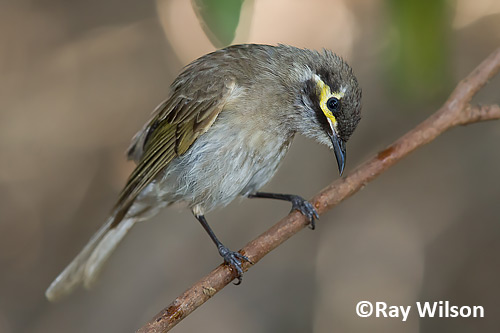
Yellow-faced Honeyeater (Lichenostomus chrysops)
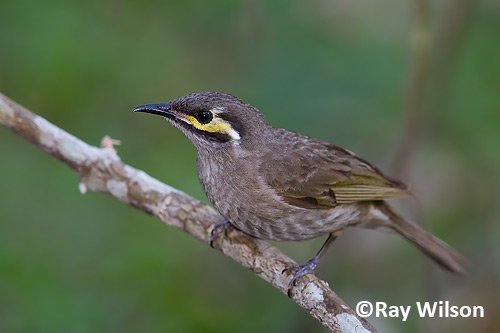
Yellow-faced Honeyeater (Lichenostomus chrysops)
Brown Honeyeaters is a species that probably has the widest distribution of all the honeyeaters in Australia, although it didn't appear to be very common in the Julatten area as I only saw a few during the week I was there. The bird below had just been taking a bath so is looking a bit damp in the photo.
Brown Honeyeater (Lichmera indistincta)
Unlike many hot places I have visited, it was definitely worthwhile to keep birding throughout the day as there always seemed to be activity of some sort even during the hot midday hours. As an example, one day I came across a flock of Bridled Honeyeaters sunbathing on the hot earth.
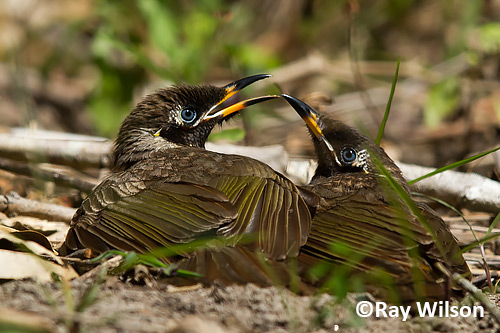
Bridled Honeyeater (Lichenostomus frenatus)
Birds quite often seem to go into a kind of trance while sunbathing and it is relatively easy to approach them when they are exhibiting this behaviour. The only problem I had in getting these photos was to determine the correct amount of flash to use to get rid of the harsh shadows in the horrible, contrasty midday light...
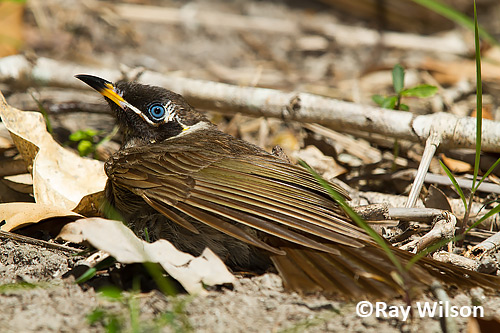
Bridled Honeyeater (Lichenostomus frenatus)
Yellow Honeyeaters were a bit less common that most of the previous species and the few that were around didn't seem to like to use the perches I had put up beside the water bath and instead went directly from the trees to the rim of the dish. I would have preferred to have got at least one photo of it on a branch but birds do not always cooperate with your wishes!
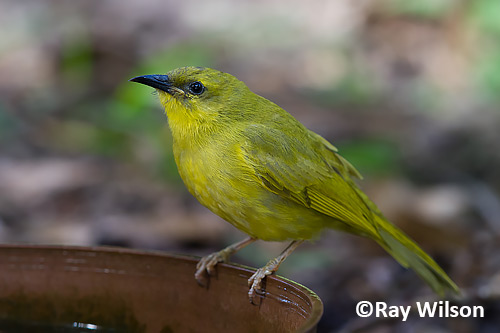
Yellow Honeyeater (Lichenostomus flavus)
White-throated Honeyeaters were more obliging with respect to using the branches, but I had to be quick to capture them on the branch as this species is a bit hyperactive and in the low light levels of the rainforest floor getting sharp images of fast moving birds is not easy due to the very slow shutter speeds you are forced to use.
White-throated Honeyeater (Melithreptus albogularis)
Dusky Honeyeater is another highly active species and never seemed to sit on a perch for more than a couple of seconds but by prefocusing on the branch above the water bath, it wasn't too difficult to get a photo before it dropped down to the tray for a drink.
Dusky Honeyeater (Myzomela obscura)
Brown-backed Honeyeater is a summer visitor to this part of Australia and they had only just started to arrive back on their breeding grounds when I was there. The individual below was the only one I saw during my week's stay.
Brown-backed Honeyeater (Ramsayornis modestus)
Ray Wilson owns the copyright of all images on this site.
They may not be used or copied in any form without prior written permission.
raywilsonphotography@googlemail.com
